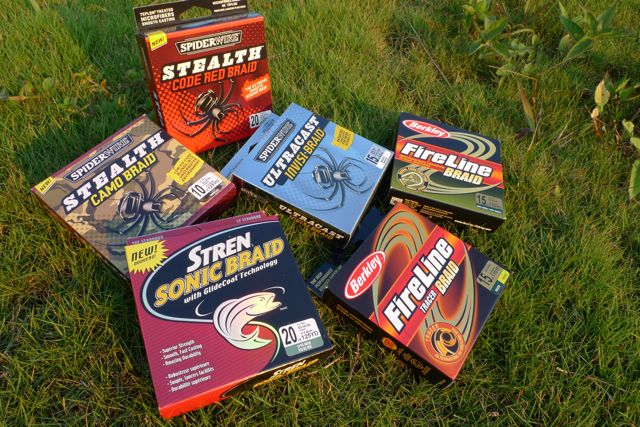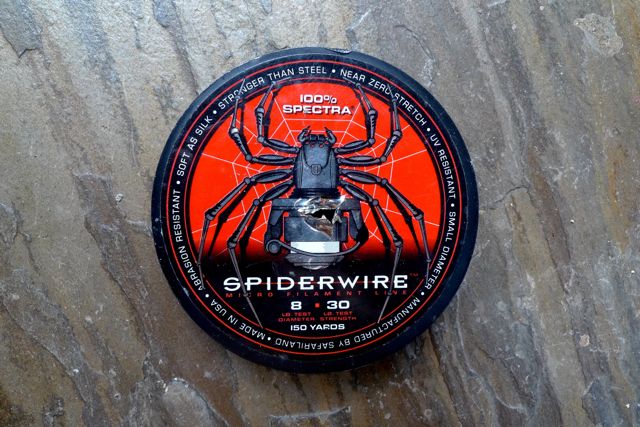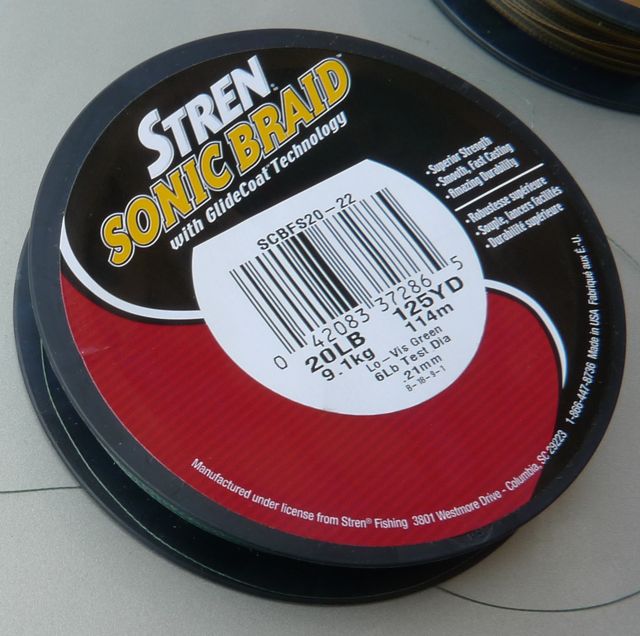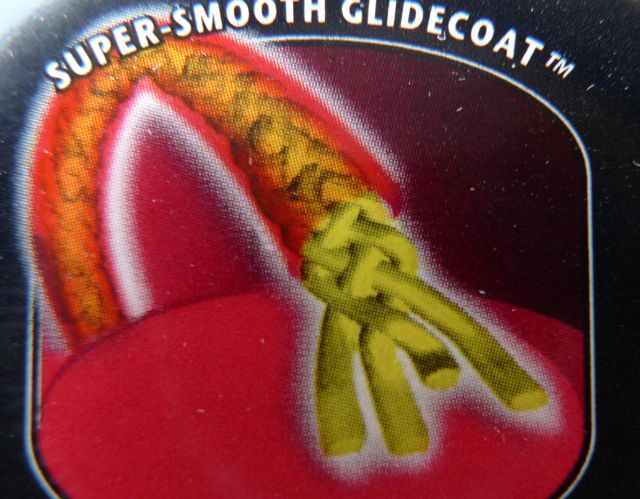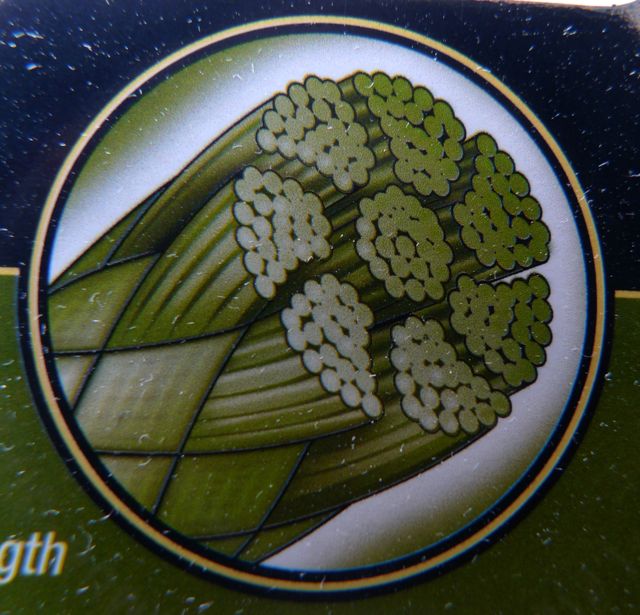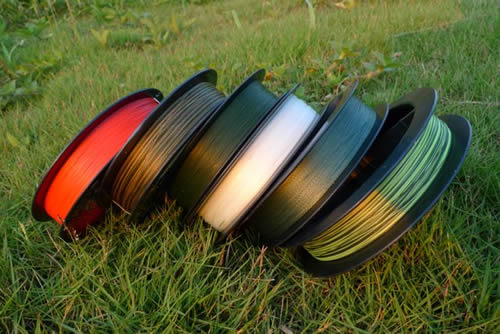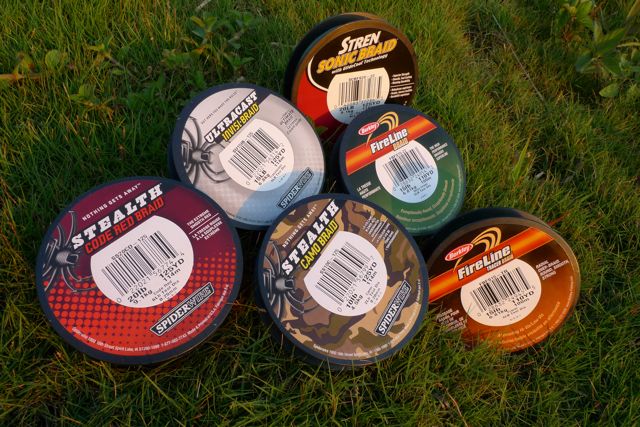
The latest in super-braid fishing lines features
by Christopher S.G. Tan
I remember when the first Gel-spun polyethylene super-line was launched in the USA market in the early 1990s. I was in the hotel room, jet-lagged and awake in the early morning watching fishing shows on ESPN. In between the shows, there were some very high tech adverts promoting “Spiderwire” the latest in fishing line technology. At that time it did not really sink in what this new line was all about. I thought it was just some marketing hype on some new brand of fishing line.
Only later did I realize that it was actually a revolutionary new fishing line, so six months later when my company sent me to USA again, I was wandering around K-Mart (a hypermarket common in the USA) and found that the “Spiderwire” fishing line was being promoted there. I happily picked up a few spools and brought them home to try them out.
Those were the good old days when choosing braided superlines was a lot simpler. There was only one type of line “Spiderwire” brand. Spiderwire was made of GSP threads marketed under the name “Spectra” in USA. Later other brands of superlines started appearing on the market, mostly made from a GSP marketed under the “Dyneema” name, essentially the same material. In Japan, they refer to this line as PE line; PE for Polyethylene.
Then began the time when we had a variety of superlines to choose from. The quality also varied. In my opinion at that time at the top of the heap was still the original “Spiderwire” as it had the tightest weave. Cheaper superlines had looser weaves and braiding. So it was easy to choose the superline; it was based on quality, which was reflected in the price it was sold for. What you paid for was what you got. One bought the superlines according to one’s available budget.
Fast-forward to the current times and almost 20 years later we have a larger variety of braided superlines to choose from. The common factors or features added to the lines are:
1) Coatings
2) Body
3) Stiffness
4) Colour
So now we have superbraids that come in various combinations, and to be honest, when I look at all these glitzy packaging with all the features plastered on the boxes, I get rather confused. So instead of looking at the marketing information by the manufacturer, I will try and get past the jargon to what we really need to know.
Coatings
The original superbraids did not have coatings and were known to be very slick; therefore tying knots was a problem because some traditional mono knots would often slip when used on superbraids. So I was initially perplexed as to why PE or GSP superbraids need to be coated with low friction coatings. After some thought, my guess was that because uncoated braids would pick up particulate matter (in easy speak – DIRT) that easily gets caught in between the fibres. This particulate matter (silica/sand and organic matter) would be the cause of friction and abrasion that would reduce casting distance, damaging the guides and wear/weaken the superbraid.
Therefore a brand-new, uncoated superbraid would cast and wear as well as a coated superbraid till it collected dirt, which could be immediately if the line was used in dirty water or made contact with the ground. The superbraid coated with low friction material like Teflon or repellant material silicon would prevent the particulate matter from penetrating between the fibres and shed easily, keeping the line clean. This would of course make sense of the claims of making the coated superbraid more durable with less friction for casting.
Coatings however would add bulk to the line, therefore those who prefer to use their lines for trolling deep prefer not to have coated lines as a thinner uncoated braided line would allow their lures or trolled baits to get down deeper. Coated lines also would cost more due to the extra process and material required in the manufacturing of the line.
Body
Some of the early superbraids were woven together in such a manner that the line would be a flat, strap-like line; this could be seen when viewed closely. The current thinking for trouble free reel spooling is that a round braid profile or shape is better to resist “dig-in” because it stacks better on the spool than flat lines. What “dig-in” means is that the line when under the load of a fish will dig into the bed of loose line, burying itself and jamming the spool, as once it digs in deep enough, the spool cannot release the line. If the dig-in is severe enough, it may result in the line snapping under the load due to the jammed spool.
The round profile also is said to resist wind knots better. This is probably because the round profile is narrow from all angles, whereas flat superbraids when exposed to wind at ninety-degree angles to their flat plane will catch the wind more easily when there is a lot of slack line in the air. Sometimes, with a light lure and gusty wind conditions, the line may catch on the guides or very occasionally the line may get a tangle in mid air and come back in a knotted loop. If the line leaves the spool jerkily due to the dig-in, the slight variations in lure flight speed and spool rotation may end up not in sync and can cause excessive loops of slack line in the air, which may cause wind knots.
Braided line is woven into strands, which in turn are braided into the fishing lines we use. The cheapest lines come in 3 strands while 4 strand braids are common. The more expensive 8 strand superbraids like the new braid from Fireline Braid are rounder in profile because they have more strands braided together. The braids with more strands are also smoother in finish. This in turn also makes for a quieter line as it goes through the guides on a cast and retrieve.
Those who use superbraids on overhead reels for offshore fishing will appreciate the smoother superbraids with reels that require the angler to lay the line manually with their thumbs or fingers. I find that the superbraids with a low strand count have a rougher braid or weave that abrades or cuts into the skin when guiding the line to lay it evenly on the spool during the line retrieve.
Line stiffness
The type of coatings the line has been treated with affects the line stiffness. This stiffness will soften with wear. This is why some anglers say the line needs to be broken into for peak performance.
For some anglers, a stiff line is easy to handle because it is less floppy. For instance, a mild backlash is easier to clear with a slight stiff line, but a soft flexible line can be difficult to untangle. Also a very soft flexible line is readily blown about in the slightest breeze, tangling up easily at your feet as you clear the tangled line from the spool. Supple line also easily kinks and forms wind knots during the cast if there is a gusty breeze and erratic release from the spool. Another problem is the supple superbraid getting twisted around the rod tip if the line snaps back past the rod tip and tangles around the tip because it is so flexible and soft by nature.
This lack of line memory does however have advantages. Stiff lines are more likely to cause backlashes on baitcasters or overhead reels because any retardation of the spool will result in the stiff line pushing back on the line on the spool, lifting them clear to get entangled. Probably a compromise between a stiff line and a supple superbraid will achieve a median between the problems of the two extreme characteristics, which is what most manufacturers seem to be doing these days.
Line colour
Unlike nylon or fluorocarbon monofilament, braided lines are not clear. So in theory they are more visible to the fish in the water. I say in theory because my own observations of the clear monofilament line underwater (wearing goggles or a dive mask) are that these clear monofilaments stand out very clearly in the water. They can visibly be seen leading down into the depths.
Thus how do coloured braided lines stack up against the clear lines? The latest generation of lines have some very interesting products with various different colour schemes. Spiderwire has come out with a new line called Invisi-Braid that is translucent. This should appeal to fans of clear lines who prefer their lines to be as close as possible to clear. I think this sort of line would be most suitable for shallow or near water surface work. For the lure casters using poppers and shallow diving lures this type of translucent line would be less contrasty against the bright and light background of the sky as most of the fish would be looking upwards to the bright background in this sort of fishing situation.
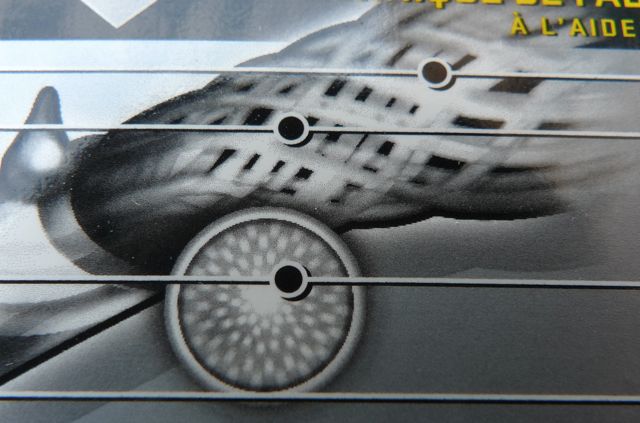 This braided line is a patented design which makes the line translucent.
This braided line is a patented design which makes the line translucent.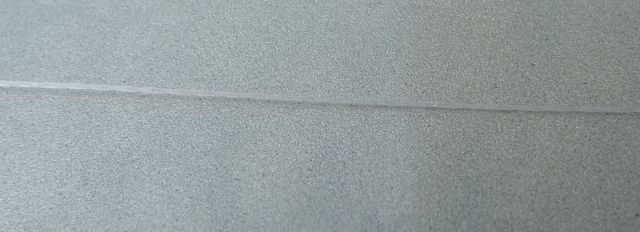 This picture of the actual line against a gray background displays its translucency.
This picture of the actual line against a gray background displays its translucency.
For other situations the lines with a dark finish would likely be less visible even though it is not clear. Dark green or gray seems to be a popular colour for superbraids. Dark colours absorb light and are less visible, both above and below water. Much of our fishing is done near structure or near the bottom where the background is darker and these dark lines blend in well with the background. When fishing, I often find it hard to spot these dark colour lines, so I must concur that it must also be less visible underwater against a dark background. Stren calls its dark Sonic Braid “Lo-vis green and Fireline calls its dark green 8-strand superbraid “Moss Green”.
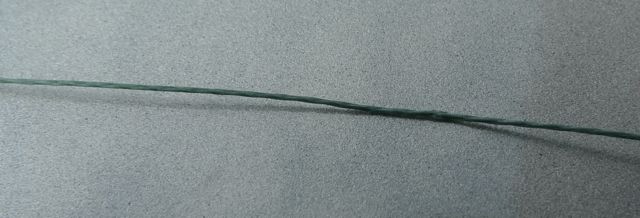 This dark green braid by Stren is called Lo-vis green. When used in dark water or in areas where there is a dark background it is quite hard to make out.
This dark green braid by Stren is called Lo-vis green. When used in dark water or in areas where there is a dark background it is quite hard to make out.
Spiderwire has gone a step further by producing a camouflaged braided line. Successful camouflage often works by breaking up the profile of the object, in this case, the straight shape of the line. The Stealth Camo Braid by Spiderwire is dyed in about 5 different dark shades along its length. This serves to break up the profile of the line. It certainly works very well above water as I often have had great difficulty trying to re-locate the line once I lose sight of it. I would assume this would be the case underwater too.
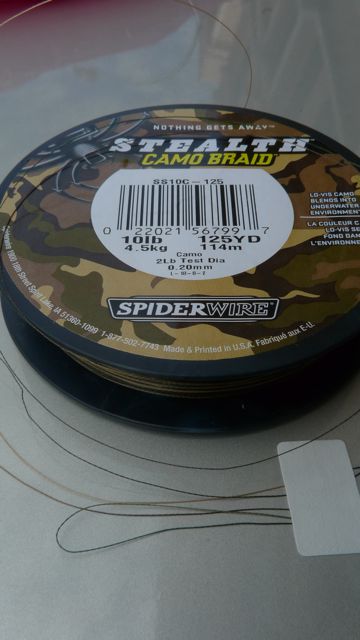 The Spiderwire Stealth spool label shows a camouflage type pattern, which the line tries to simulate, the best a line can.
The Spiderwire Stealth spool label shows a camouflage type pattern, which the line tries to simulate, the best a line can.
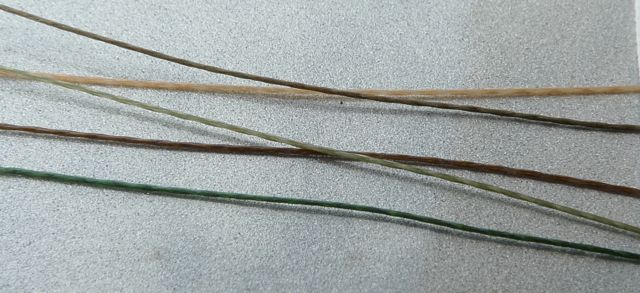 The line’s profile is broken up with a combination of 5 different shades of brown and green. From my experience this seems to work very successfully when trying to view the line during fishing, because it is extremely hard to spot!
The line’s profile is broken up with a combination of 5 different shades of brown and green. From my experience this seems to work very successfully when trying to view the line during fishing, because it is extremely hard to spot!
At the other extreme, there are superbraid lines that are bright in colour, designed to be easily visible. This type of high visibility line is favoured by some trollers and lure casters as being able to see where the line is at all times can be crucial. This is especially so for those trolling several lines simultaneously. I have always favoured fluoro-green lines as the bright green is highly visible above water and maybe looks like some form of vegetation in the water. However for superbraids I have yet to see a fluoro-green colour. The bright colours produced for superbraids are mostly yellow.
Spiderwire has a new line called Code Red Braid; the superbraid is a deep red colour, which is clearly visible above water level. I understand that the reasoning behind the use of red colour is that it is the first colour to “disappear” the deeper it gets. This is because the light frequency of the red spectrum is unable to penetrate deeper down into the water, hence, the red coloured line would not reflect red light rays deep down as there are no red light rays in deep water. In clear water, the red light disappears below 10 metres depth. This figure would reduce in stained or dirty water. This will mean that the red line will be black (no colour reflected) and hard to see in deeper water.
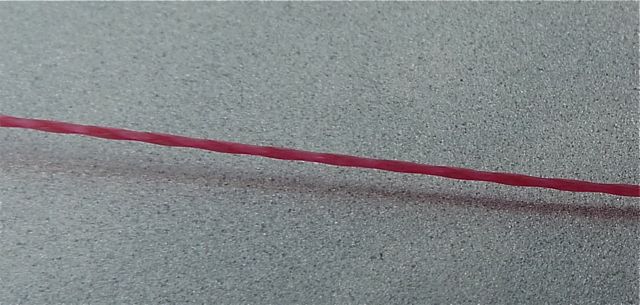 This bright red Spiderwire superbraid is highly visible above water, but becomes less visible the deeper the line goes.
This bright red Spiderwire superbraid is highly visible above water, but becomes less visible the deeper the line goes.
This red superbraid would be suitable for those wanting a highly visible line but yet want it to be less visible in the water below 10 metres (less in dirty water). For myself I am not very bothered by the visibility or invisibility of a mainline as I use a mono leader. I am quite comfortable to use lines of any colour, but who knows, it may be an advantage having the red line when working ultra-deep diving lures or baitfishing in water deeper than 10 metres.
Another new colour pattern is the Tracer Braid from Fireline. It has an interesting concept to visibility or the “invisibility” of lines. It has both the traits of a high-vis and low-vis line. The colour alternates between a high-vis yellow and a low-vis green every 2.5 feet. This is something like camouflage as it breaks up the long continuous profile of the line. It makes it highly visible and yet not so visible. It seems to be a good compromise between having a high-vis bright line and a more subdued dark line.
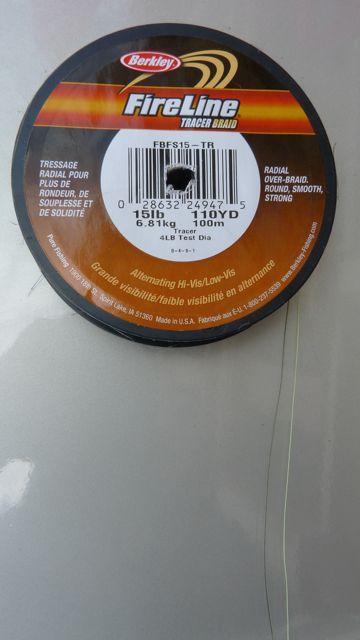 This quality 8-strand braid alternates colours every 2.5 feet.
This quality 8-strand braid alternates colours every 2.5 feet.
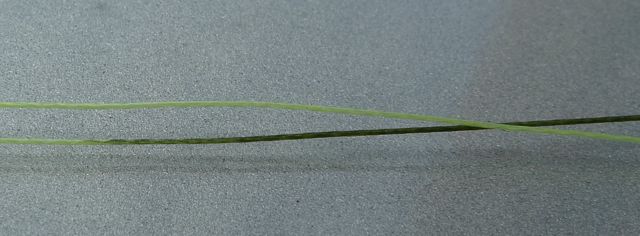 The two colour Tracer line alternates between a low visibility dark green and a brighter chartreuse colour.
The two colour Tracer line alternates between a low visibility dark green and a brighter chartreuse colour.
When I first used it, the alternating coloured line made it a bit difficult to pick out visually, but once I got used to looking for just the yellow sections, it got easy to make out the whole line and where it enters the water. Additionally if one needs to know the length of line out for trolling or baitfishing, just count the colour (e.g. yellow) bands that leave the spool or rod tip and times five feet for the length of line off the reel or rod tip. For those looking for less visibility where the knot of the tracer braid is tied, just make sure the knot is at the start of the dark green line and the line attached to the terminal tackle will be less visible.
Conservation
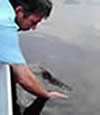
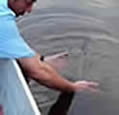
We need to protect and conserve our resources by practising catch and release of our sportfish and protecting the habitat of our fishes.
